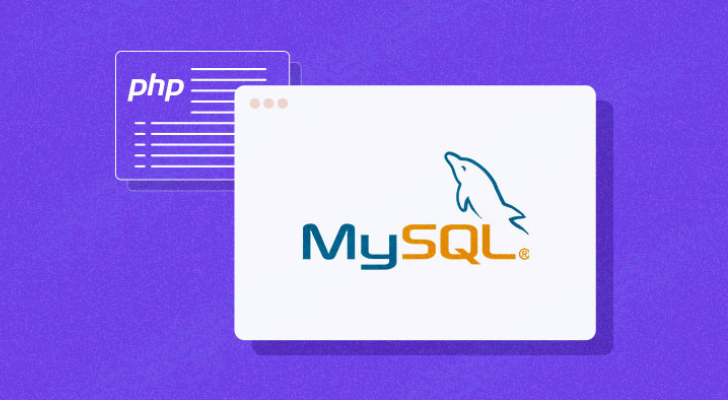PHP MySql

PHP (Hypertext Preprocessor):
-
Server-Side Scripting:
- PHP is a server-side scripting language, meaning it runs on the web server, generating dynamic content before it is sent to the user's browser.
- It allows the creation of dynamic web pages by embedding PHP code within HTML.
-
Versatility:
- PHP is versatile and supports various programming paradigms, including procedural, object-oriented, and functional programming.
- It is widely used for web development but can also be employed for command-line scripting and other applications.
-
Interactivity and Form Handling:
- PHP facilitates the handling of user input through forms on web pages.
- It processes form data, performs validation, and interacts with databases to store or retrieve information.
-
Database Connectivity:
- PHP has extensive support for connecting to databases, making it a key component for building dynamic, data-driven websites.
- Common database connections are established using MySQLi or PDO (PHP Data Objects).
-
Session Management:
- PHP allows the creation and management of sessions to maintain stateful interactions with users across multiple web pages.
- Session variables enable the storage of user-specific information.
-
Server-Side File Handling:
- PHP can handle file uploads, downloads, and manipulation on the server, making it effective for managing file-related operations.
-
Security Features:
- PHP includes built-in security features, such as input validation functions, to help protect against common web vulnerabilities like SQL injection and cross-site scripting (XSS).
MySQL:
-
Relational Database Management System (RDBMS):
- MySQL is a popular open-source RDBMS known for its reliability, scalability, and ease of use.
- It organizes data into tables with predefined relationships, ensuring efficient data storage and retrieval.
-
Data Integrity:
- MySQL enforces data integrity through the use of constraints, such as primary keys, foreign keys, and unique constraints, ensuring the accuracy and consistency of stored data.
-
SQL Support:
- MySQL supports the Structured Query Language (SQL), providing a powerful and standardized interface for managing databases.
- SQL queries are used to retrieve, insert, update, and delete data in MySQL databases.
-
Transaction Management:
- MySQL supports transactions, ensuring the atomicity, consistency, isolation, and durability (ACID properties) of database operations.
-
Scalability and Performance:
- MySQL is designed for scalability, making it suitable for both small-scale applications and large, enterprise-level systems.
- It optimizes query performance through features like indexing and query caching.
-
Security Measures:
- MySQL incorporates security features such as user authentication, access control, and encryption to protect data stored in the database.
-
Community and Support:
- MySQL has a large and active community, providing resources, documentation, and support for users and developers.
- It is continuously updated and improved with contributions from the open-source community.
🚀 Master Top Web & App Frameworks
Explore structured tutorials for AngularJS, React, Laravel, Flutter, PHP, SQL, and more.
📘 Introduction to AngularJS
Introduction to AngularJS overview
📘 Introduction to Laravel
Learn Introduction to Laravel in Laravel with real-world examples and step-by-step guide.
📘 Introduction to CodeIgniter
An introduction to Introduction to CodeIgniter in CodeIgniter with examples.
📘 Introduction to React
Quick overview and guide to Introduction to React in React JS.
📘 Introduction to Flutter
An easy-to-follow tutorial on Introduction to Flutter in Flutter mobile app development.
📘 Introduction to Kotlin
Learn Introduction to Kotlin in Kotlin programming with examples for Android or backend apps.
📘 Introduction to PHP
Understand Introduction to PHP in PHP with practical examples and clear syntax.
📘 Introduction to SQL
Understand Introduction to SQL in SQL for effective database querying and management.
📘 Introduction to Bootstrap 5
Understand Introduction to Bootstrap 5 in Bootstrap 5 for responsive web design using pre-built components.
📘 Introduction to HTML
Understand Introduction to HTML in HTML to create structured, semantic, and accessible web content.
📘 Introduction to CSS
Explore Introduction to CSS in CSS to enhance web design using styling properties and layout techniques.
📘 Introduction to JavaScript
Understand Introduction to JavaScript in JavaScript to build dynamic and interactive web experiences.
📘 Introduction to Node.js
Explore Introduction to Node.js in NodeJS for backend development using JavaScript and non-blocking architecture.
📘 Introduction to AJAX
Understand Introduction to AJAX in AJAX to update web pages without full reloads using asynchronous JavaScript and XML.
📘 Introduction to jQuery
Learn Introduction to jQuery in jQuery to write less and do more with simplified JavaScript operations and cross-brow...
📰 Latest Blog Posts
Insights, tutorials, and tech stories from our experts.
Transform Your Passion into a Web Development Career
Do you love tech? Let’s turn it into a profession with full stack development.
Not Just Coding – Career-Focused Full Stack Training
We don’t just teach code—we teach how to get jobs with it.
Learn, Code, Build, Get Hired – Full Stack Program
A step-by-step path to go from beginner to hired developer.
BCA/MCA/B.Tech? Start Building Real Websites Now!
Already pursuing IT education? Now build real websites with us!
Offline Full Stack Training in Dwarka & Uttam Nagar – Limited Seats!
Join our offline batch in Dwarka or Uttam Nagar and learn full stack development practically.
Struggling in Interviews? Build Skills That Get You Hired!
Facing rejections in job interviews? Build the right skills and project experience.


